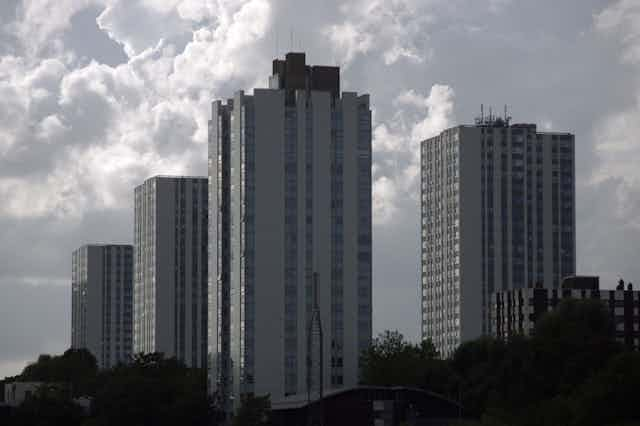It has been one year since a fire tore through Grenfell Tower in west London, resulting in the deaths of 72 people. The rapid spread of the fire revealed, among other things, a catastrophic regulatory failure. Systems which should have designed out fire hazards and prevented the spread of the fire had been repeatedly compromised.
As the causes and traumatic consequences of the event are still being unravelled, it remains vital that we hear from the bereaved, the survivors and the local community. Their voices, which have in the past gone unheeded, must be listened to by authorities, as they seek to allocate responsibility and ensure that this never happens again.
The tragedy has also had an impact beyond Grenfell, on everybody who lives in high rise accommodation, as well as the owners and managers of these blocks. It is difficult, and possibly dangerous, to believe that the regulatory failings at Grenfell Tower were exceptional. Indeed, similar cladding, failed compartmentation and other safety risks have since been identified in hundreds of other tower blocks.
Cutting corners, ticking boxes
In her review of building regulations, Dame Judith Hackett said that “the mindset of doing things as cheaply as possible and passing on responsibility for problems and shortcomings to others must stop”. And since Grenfell, many local authorities, fire authorities and landlords have taken action to ensure residents’ safety.
But both public and private tenants are still exposed to risks, resulting from a culture that values box-ticking over competency, performance and quality, when it comes to complying with building regulations. In a report for housing charity Shelter, which I authored together with David Cowan, Edward Kirton-Darling and Edward Burtonshaw-Gunn, we found that the law regulating standards and safety in housing is piecemeal, incoherent and outdated.
Reforming the law is necessary – but it is not enough. Tenants must be able to hold the state to account for breaches of housing standards, building regulation and fire safety requirements. Here are some of the legal routes tenants can take, to improve health and safety in their buildings.
Outdated and inadequate
When a person wants to take legal action about housing conditions, their starting point is the Landlord and Tenant Act 1985. Unfortunately, Section 8 of the act, which relates to fitness for human habitation, has a rental limit which has not been updated since 1957. You cannot use the section if you pay more than £80 annual rent in London and £52 elsewhere. It hardly needs saying that very few properties qualify.
Section 11 of the act imposes some obligations on landlords to repair when the rental agreement is for seven years or less. While this applies to most assured shorthold tenancies, it requires that there is disrepair. So, for instance, damp and mould, or exposed asbestos which have not yet caused structural damage would fall outside of this law.

Following Grenfell, the government indicated that it will support Labour MP Karen Buck’s Homes (Fitness for Human Habitation and Liability for Housing Standards) Bill, which addresses problems with the law. But it still relies on tenants having the financial and emotional resources required to take action.
What’s more, tenants expose themselves to the risk of eviction when they take legal action. The Deregulation Act 2015 provides limited protection from revenge evictions – this bill alone is not enough to redress the imbalance of power between landlords and tenants, when it comes to health and safety in the home.
Empowering residents
The Housing Health and Safety Rating System – used by environmental health officers to assess health and safety risks caused by problems in the home – might be more useful to the residents of tower blocks. Environmental health officers have a range of enforcement tools available, to require an owner to address serious risks. This system takes the burden of enforcement off the resident, and places it on the state instead.
But even this route has problems: tenants can’t trigger enforcement actions themselves, and the law doesn’t offer the same protections to the tenants of social housing, because local authorities can’t take action against themselves. These problems can be overcome with some imaginative legal thinking, for example by providing routes for redress via the housing ombudsman or the First Tier Tribunal (Property) Chamber.
Above all, residents must be given rights so that allegations of breaches of building regulations or flawed fire risk assessments are taken seriously. At the moment, people whose lives are put at risk by inadequate compliance with the regulatory framework have no means of taking action to ensure things are put right. It is disappointing that the current version of Buck’s bill has dropped the clause that would at last have imposed civil liability for breach of building regulations, which would have made it much easier for residents to hold contractors and others to account.
Until these issues can be addressed, information such as fire risk assessments should be made available to residents. Basic knowledge about how fires spread would help residents to understand, for instance, the importance of self closures on doors. People should be clear about who they can complain to, and what action will be taken. Regulators need to avoid complacency and box-ticking in regulatory compliance. Empowering those who have most to lose by minimalist approaches to health and safety has to be the way forward.

